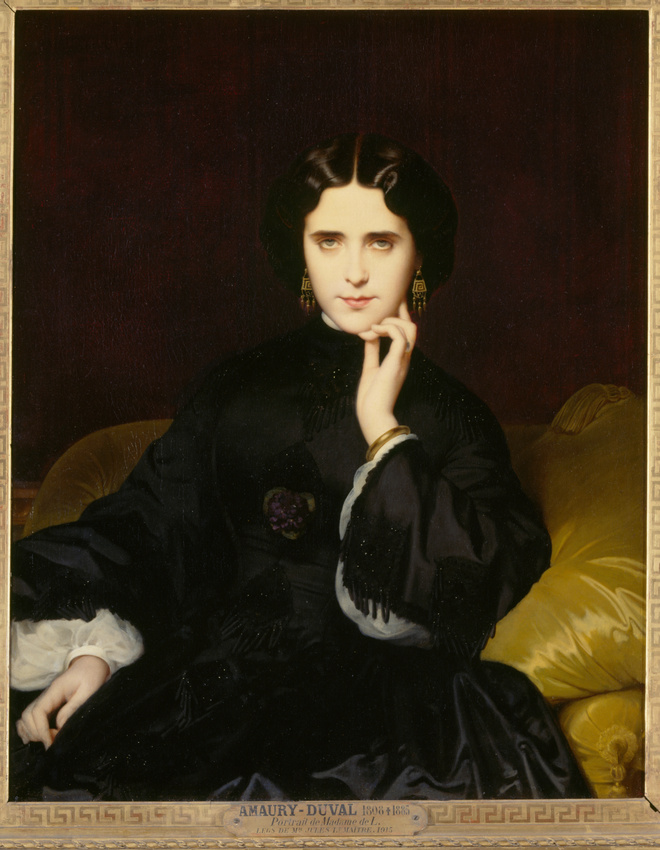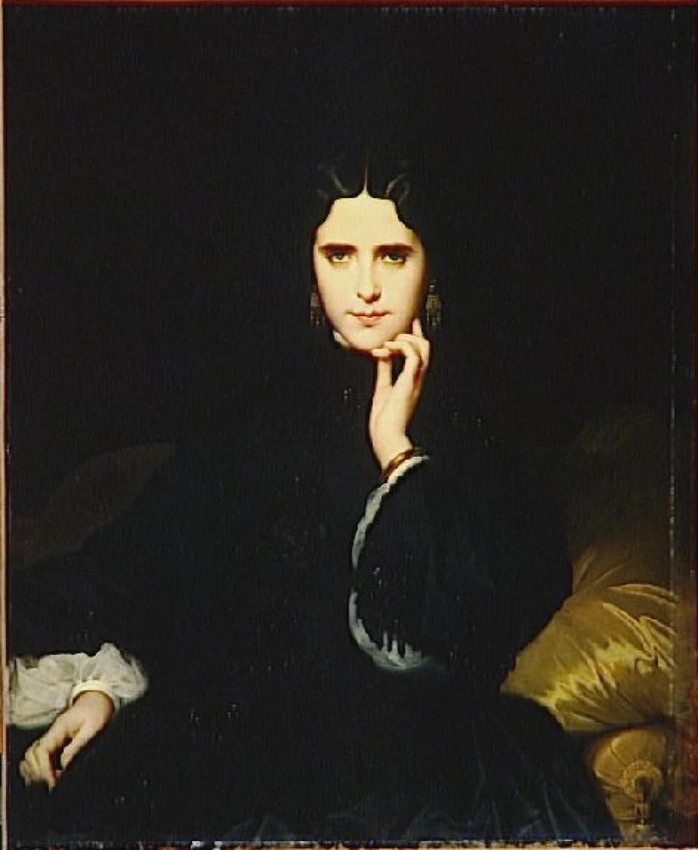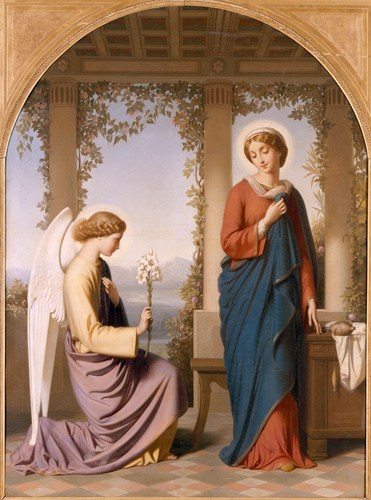Madame de Loynes
When Amaury-Duval painted her portrait, the Comtesse de Loynes was still just Jeanne de Tourbey. The daughter of working-class parents from Reims, she took advantage of her beauty and wit to conquer Paris and, through her lover Prince Napoleon, to open one of the most brilliant Second Empire literary salons.
This was keenly attended by writers and critics such as Charles Sainte-Beuve, Hippolyte Taine, Alexandre Dumas, and also Gustave Flaubert, who admired her "panther-like graces and devilish wit".
To do justice to such charms, Amaury-Duval called upon all the expertise he'd gleaned from portraits by his master Ingres; set in a jewel case of buttercup silk cushions, the brilliant black taffeta gown —extended by the deep purple drape and the jet-black hair— lend the downy face the opaline brightness of moonlight.
The hypnotic gaze from the shaded gray eyes, framed by earrings in the neo-Greek style, celebrates the gift of this "admirable listener".
But, comparable to the gaze of the Comtesse de Castiglione in her photographic self-portraits, this stage effect also introduces the intoxicating allure of the female sphinx, the enigmatic femme fatale, which enjoyed great success with the symbolists at the end of the century.
The critic Emile Cantrel observed that, "There is a world and a half-world in those eyes".



